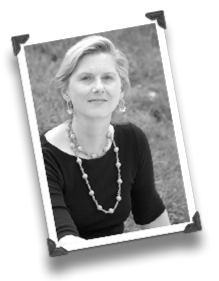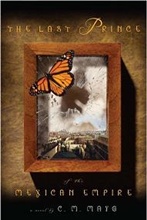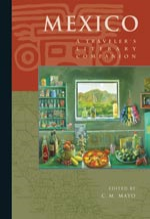The times, they are a changin’. Ebooks technology doesn’t just replace paper with pixels; it creates new opportunities for publishing books that would be cost-prohibitive if published traditionally. The capital and labor costs for publishing ebooks range from small to miniscule, and distribution channels, such as Amazon.com, BN.com, and sites like Smashwords.com, are readily available. It’s no surprise, then, that specialty publishers are springing up to take advantage of this new economic model.

I asked C.M. Mayo about Dancing Chiva and her future projects in all types of publishing.
JRB: What led you to start this new venture?
C.M. Mayo: I love making books. I love writing them more than I like making them, which is why, though it occurred to me many times, I did not start my own publishing firm. (About a decade ago, I did found a literary journal, Tameme, and from that, took some tough lessons in how much work it really is to edit, produce, distribute, and market a publication.) So why now? Because with the digital revolution, transaction costs have so fallen that everything changes.
I own the ebook rights to not all but several of my own books, and I don’t see that publishers are doing enough for me to make it worth my while to turn them over in exchange for some puny percentage. But more interestingly, in doing the research for Miraculous Air, my travel memoir of Baja California, and later, The Last Prince of the Mexican Empire, a novel about Mexico’s Second Empire, I came across several books and other shorter works that deserve to be published/republished and yet do not, under the old publishing model—paper printing, distributor, bricks-and-mortar bookstores—have the potential to cover their costs. Some of these are so old that copyright has expired, so for me, the cost of publishing is little more than formatting and uploading. Of course, I’ll add an introduction, images, and some other goodies. They will be scrumptious little books.
In sum, though traditional bookstores and publishers are certainly not dead, they are not playing the overshadowing role that they did. For the kind of publishing I want to do—ebooks and very small runs of signed editions (marbled paper, etc)—I don’t need to pay for freight and a warehouse. I don’t need Ingram or Baker & Taylor. I don’t need bookstores. What I need—and indeed have—is a website and a permission mailing list—a base of customers who have provided their e-mail because they want to receive my newsletters with their announcements, special offers, and more. People can sign up here.
JRB: Ebook sales are rising dramatically in the U.S. Are ebooks becoming more popular in Mexico, too?
C.M. Mayo: No, but they will. I’ve been living in Mexico City for more than 20 years and what I’ve seen is that with so many things, from women in the workplace to using Facebook and Twitter, urban Mexico follows the U.S. but with a lag of a few years. That’s speeding up now: for example, already you can find many leading Mexican writers on Facebook and Twitter. Once ebooks get a good toe hold in the major cities—Mexico City, Guadalajara, Monterrey, Puebla, Querétaro, Merida, etc.—I think things in the book business will change faster than you can whack a piñata. Further, already many English language readers living in Mexico are wedded to their Kindles.
JRB: I see that you support Kindle. Are you planning on supporting other ebook formats as well, such as EPUB, which can be read on NOOK and Adobe Readers?
C.M. Mayo: Dancing Chiva will offer ebooks in all major formats.
JRB: Do you plan to continue publishing English books in paper through traditional publishers?
C.M. Mayo: Yes, because with their expertise and scale, they can do things I do not aim to do with Dancing Chiva. As I said, much as I love making books, I prefer writing them; for this reason, Dancing Chiva is intentionally small scale at the level of administration and marketing. And I have to say, I have been very happy with my publishers, Whereabouts Press, Unbridled Books and, in Mexico, Grijalbo Random House Mondadori, especially. They certainly know how to get the books in the bookstores.
JRB: One of the forthcoming ebooks mentioned on your site is “My Memories of Maximilian.” Who was Marie de la Fère, and what is her memoir about?
C.M. Mayo: The historian Robert Ryal Miller mentioned this rare manuscript, a circa 1910 English language handwritten eyewitness memoir of Maximilian, in a letter to me some years ago. He had found it at the Bancroft Library, University of California, Berkeley, and was preparing an edited and annotated version for publication. Alas, Miller died in 2004 without, as far as I know, having published it. I have not seen what Miller wrote, I am sad to say, for I understand he had identified the author who was using, as I too, immediately suspected, a nom de plume. When I visited the Bancroft as part of my own research for my novel, The Last Prince of the Mexican Empire, I dutifully looked up this manuscript. I was glad I did, for, among so many other things, it gave me insight into the strong feelings of the monarchists and Maximilian’s character. After Miller’s death, as I felt this memoir deserved more readers than we intrepid few who have eyes for microfiches, I wrote to the Bancroft for permission to reprint it. The Dancing Chiva ebook, which will include an introduction and more, will be available later this year.
JRB: You describe your workshops as focusing on “nuts and bolts.” As a writer, do you find that most obstacles can be overcome through a practical approach—a matter of applying the right technique? I wonder if you see young writers getting lost in more abstract ideas about inspiration and capital w Writing?
C.M. Mayo: Most writers and would-be writers are plagued by anxiety, which makes perfect sense, for writing is a public act; it invites praise but also attack. (I don’t worry about attack; but that’s another subject.) Learning the techniques of fiction– a never-ending process– has two benefits. First, it improves the quality, vividness, and general readability of your writing; second, it armors your confidence and so allays anxiety. As for abstract ideas, that is the purview of the so-called English Department with which, as a working artist, I have little truck. Bless them, may they all get tenure! And one day include my works on their syllabi!
JRB: What’s behind the name Dancing Chiva?
C.M. Mayo: In the hallway into my office, I have an antique painting of a gypsy dancing with a little white goat. I was wondering what to call my company when I happened to glance at the little goat—chiva (female goat in Spanish). It’s a play on Dancing Shiva, the representation of the cosmic dance of the Hindu god (no disrespect intended), and very apt, for, to me, making books is a kind of happy little dance.
Learn more: Dancing Chiva
About C.M. Mayo
C.M. Mayo is a long-time resident of Mexico City and the author of several widely-lauded works on Mexico, including the novel The Last Prince of the Mexican Empire (Unbridled Books), which was selected as a Library Journal Best Book of 2009. An avid translator, she has also edited the bilingual literary journal Tameme and Tameme chapbook series, as well as a collection of 24 contemporary Mexican literary works, Mexico: A Traveler’s Literary Companion (Whereabouts Press). Read more about C.M. Mayo’s travel writing, fiction, literary translation, and many awards at www.cmmayo.com.

